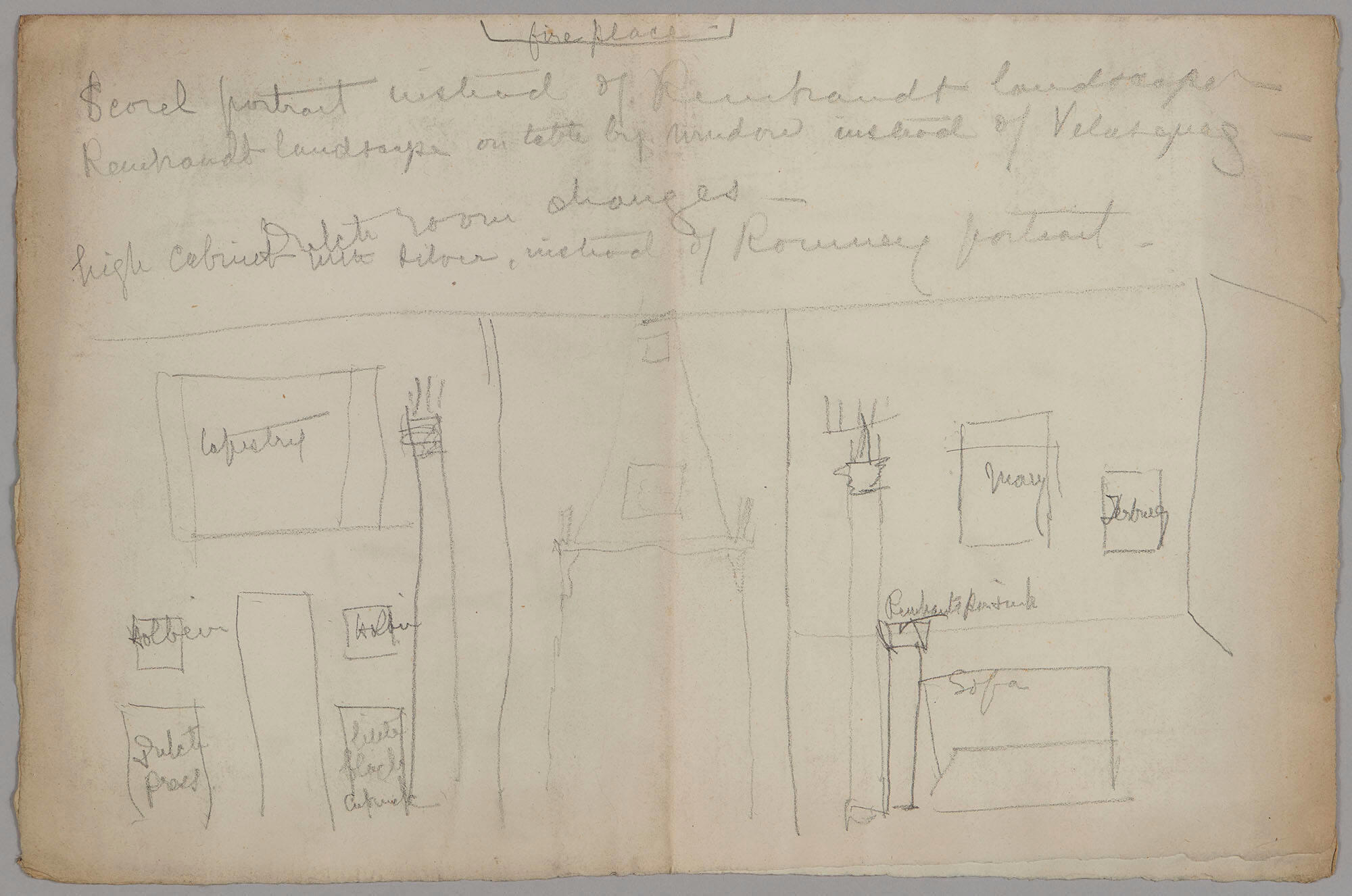Isabella Stewart Gardner’s conception of her Dutch Room captures all the hallmarks of her unique and groundbreaking curatorial approach: an intimate setting suggesting a domestic environment; groupings of objects of different types, times, and places to show thematic connections, and her faith in the visitor to create their own interpretations and experience.
In the Dutch Room, a 23-year-old Rembrandt gazes at a gallery he inspired. Purchased in 1896, Rembrandt’s Self-Portrait, Age 23 is the painting that solidified Isabella's decision to transform her private collection into a public museum. His portrait was the cornerstone for this gallery, although his surroundings don’t look like they did over 100 years ago. Not only were six of the 13 works from the 1990 theft taken from this room, but time itself has faded much of the gallery’s splendor.
By early 2027, young Rembrandt will look out over a room beautifully restored, much closer to Isabella’s original vision, and ready to welcome back the stolen works when they someday return (we hope and believe) to their rightful home.

Image of North Wall of the Dutch Room
This floor-to-ceiling project encompasses works of art and architectural elements throughout the gallery, including the restoration of select paintings, frames, sculptures, and furniture; treatment of the 16th-century Italian painted ceiling; reproduction of wall textiles and chair upholstery; conservation of terracotta floor tiles; and installation of a new energy efficient lighting system.

Isabella Stewart Gardner Museum, Boston
Isabella’s only surviving installation sketch is for the Dutch Room
Isabella Stewart Gardner (American, 1840–1924), Plans for the Dutch Room and the Short Gallery, about 1914. Graphite on paper, 33.7 x 44.5 cm (13 1/4 x 17 1/2 in.)
The gallery will remain open throughout the restoration. While many objects will be treated in the Museum’s Poorvu Family Conservation Center, other initiatives—such as cleaning the historic ceiling, reupholstering the walls with reproduction textiles, and refinishing floor tiles—are taking place in the gallery, providing visitors the unique opportunity to witness conservators at work and uncover new knowledge and stories alongside them.

Isabella Stewart Gardner Museum, Boston
Peter Paul Rubens (Flemish, 1577–1640), Thomas Howard, Earl of Arundel, about 1629–1630. Oil on canvas, 122.2 x 102.1 cm (48 1/8 x 40 3/16 in.)
Several paintings will receive research, analysis, and conservation, including the first major work by Peter Paul Rubens to come to this country, as well as Ter Borch’s Music Lesson and The Dauphin, François D'Angouleme after Corneille De Lyon.

Isabella Stewart Gardner Museum, Boston
Workshop of Gerard ter Borch the Younger (Dutch, 1617–1681), The Music Lesson, about 1668. Oil on canvas, 66.2 x 52.4 cm (26 1/16 x 20 5/8 in.)
Frames are receiving restoration treatment, including those left behind after the theft—as well as the original frame for Ter Borch’s Music Lesson, which was replaced in the last century by a different frame and recently re-discovered in Museum storage.
Isabella Stewart Gardner Museum, Boston
Conservators treat Saint Martin and the Beggar in the conservation lab, June 2024.
Select sculptures and decorative arts are being treated, such as Saint Martin and the Beggar, which was one of the pieces worked on in the first year of this project.

Isabella Stewart Gardner Museum, Boston
Italian, Veneto, Set of Fourteen Side Chairs (Sedie da parata) late 17th century. Gilded wood, 117 x 51 x 40.5 cm (46 1/16 x 20 1/16 x 15 15/16 in.)
Furniture, notably fourteen 18th-century Venetian side chairs, will be reupholstered and their gilded legs treated.
Representatives from Prelle Manufacture meet with the Gardner’s William and Lia Poorvu Curator of the Collection, Diana Seave Greenwald. (Left to right: Sabine Verzier, Diana Seave Greenwald, Nolwenn Ramelet, and Helene Verzier)
Using historic photographs and fragments of original silk fragments found in storage (to recreate arrangement and patterns), Gardner conservators are partnering with renowned Prelle Manufacture, a family-owned textile mill operating in Lyon, France since 1752 to reproduce 10 different textiles that once covered gallery walls (replaced with a single pattern, green upholstery in the 1950s), as well as fabric for upholstered chairs.

Isabella Stewart Gardner Museum, Boston
Italian, Orvieto, Ceiling, about 1500. Painted wood, 890 x 587 cm (350 3/8 x 231 1/8 in.)
The Dutch Room’s early 16th-century painted wood ceiling from Orvieto, Italy will be cleaned (revealing hundreds of scenes of mythological subjects, decorative patterning, and even some 19th-century censorship of nudity) as will the glazed terracotta floor tiles commissioned by Isabella from the Moravian Pottery and Tile Works.

